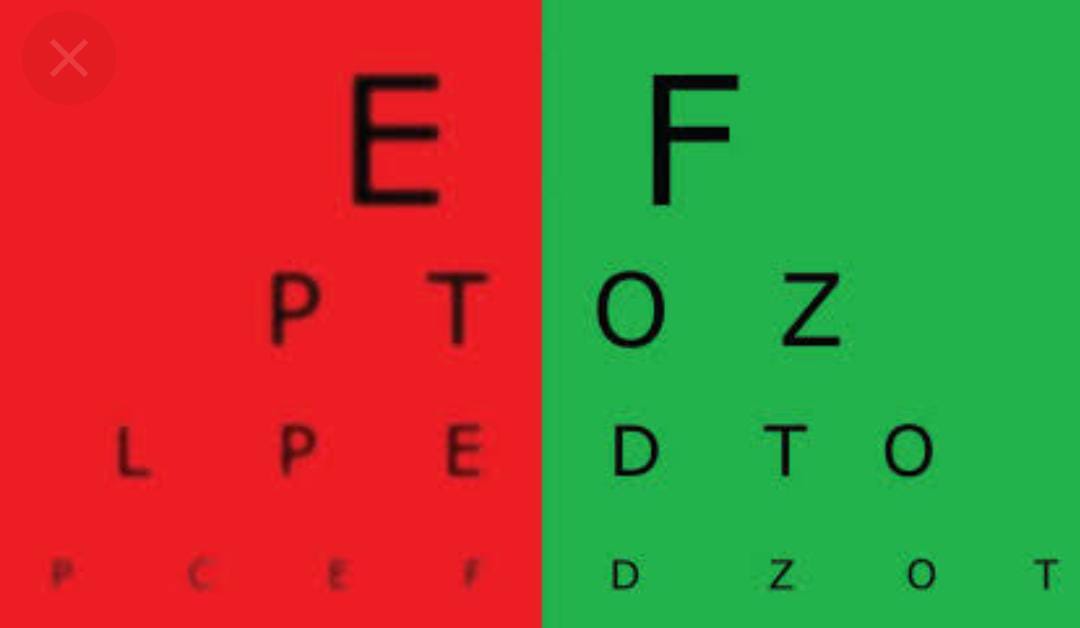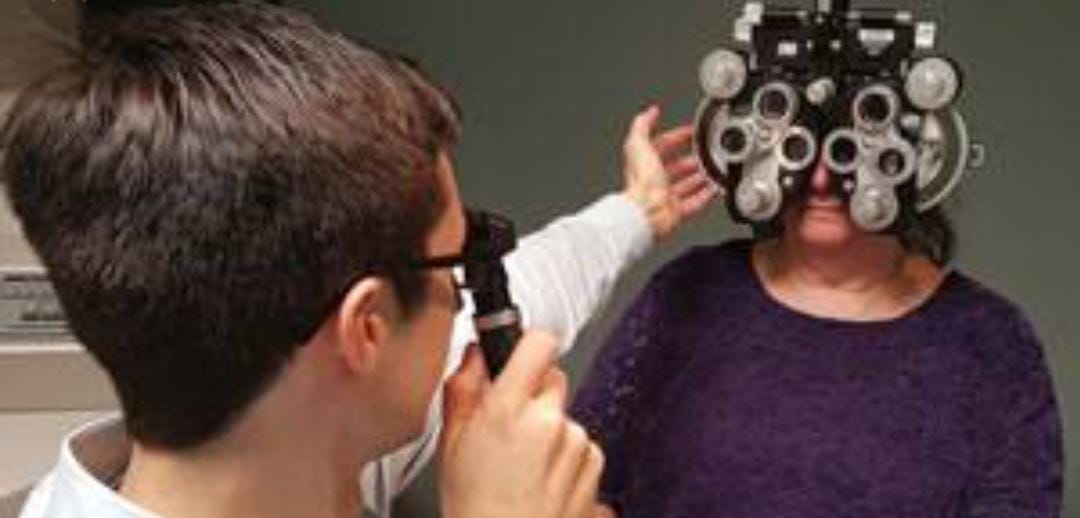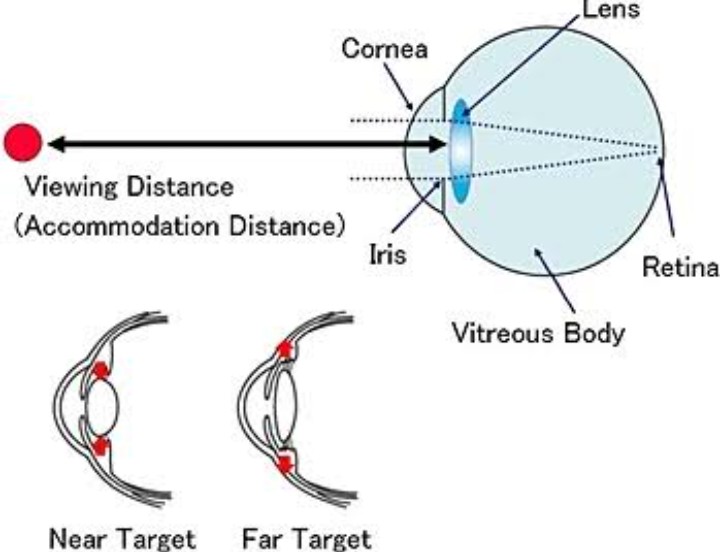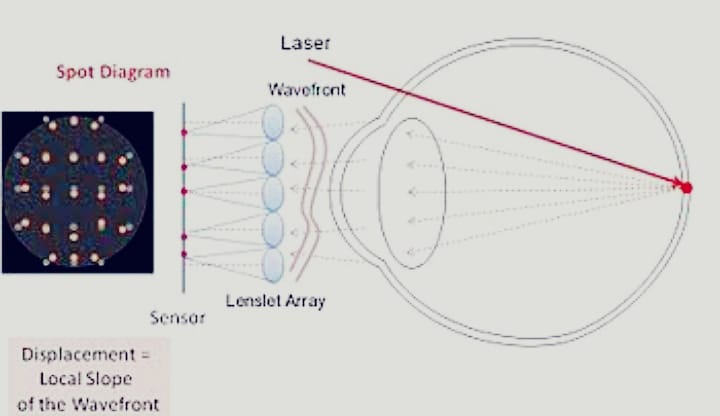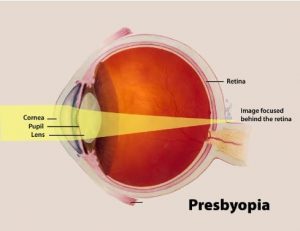The initial Duchrome test, also known as the Bichrome test, consists of two directions, red and green. Color distortion, the basis of the experiment, occurs because different wavelengths of light are curved at different levels.
The red-green Duchrome test is based on a monocular end point where each eye is examined separately.
A duochrome test is a test commonly used to refine the final sphere in refraction, which makes use of the longitudinal chromatic aberration of the eye.
Because of the chromatic aberration of the eye, the shorter wavelengths (green) are focused in front of the longer red wavelengths.
The duochrome or bichromatic test is commonly used as a check on the best vision sphere during monocular refraction. It can be used at two points:
After the initial determination of the best vision sphere and prior to the use of the Jackson cross-cylinder (JCC) – to ensure the circle of least confusion is on the retina prior to the use of the JCC.
After the JCC test and prior to finalising the refractive correction 1. Occlude one eye. Turn off the room lights to dilate the pupil, which increases the chromatic aberration of the eye.
- Ask the patient: “Are the rings/letters/dots clearer and backer on the red or on the green, or are they the same?” If they are the same, this suggests the vest vision sphere has been obtained and the circle of least confusion is on the retina.
- If the rings on the green are clearer, add plus +0.25 DS until you obtain balance. Note the additional spherical power needed to obtain balance.
- If the rings on the red look clearer, add minus -0.25 DS until you obtain balance, noting the additional power required.
- If more than +/- 0.50 DS is required to balance, this usually indicated the duochrome test is not reliable for this patient and should be ignored.
▪︎ Because this test is based on chromatic aberration and not on color discrimination, it is used even with people having & nbsp; color vision deficiency.The eye with overactive accommodation may still require too much minus sphere in order to balance the red and green. Cycloplegia may be necessary.
The duochrome test is not used with patients whose visual acuity is worse than 20/30 (6/9), because the 0.50 D difference between the 2 sides is too small to distinguish. - Prior to the use of the JCC: if the clarity of the rings changes from green to red with +0.25 DS or from red to green with -0.25 DS, then leave a young patient on the green as they will be able to accomodate to bring the circle of least confusion onto the retina.
- After the use of the JCC and before finalising the refraction: if the clarity of the rings changes from green to red with +0.25DS or red to green with -0.25 DS, note the additional spherical power required t leave a young patient ‘on the red.’
- Use the additional lens power suggested by the duochrome test and double-check whether this additional power is preferred by the patient using the plus-minus technique of best vision sphere assessment.

